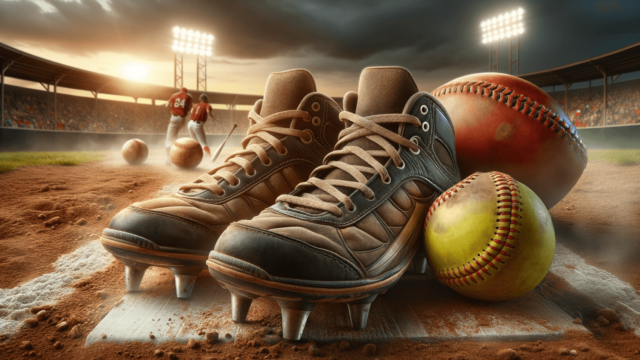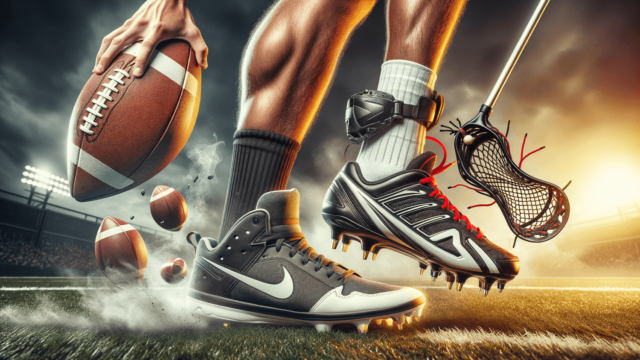
Football gear typically weighs between 15-25 lbs (7-11 kg), with helmets weighing between 4-6 lbs (1.8-2.7 kg) and pads averaging 5-9 lbs (2-4 kg). Cleats, gloves, and other accessories contribute to the remaining weight.
Breaking Down the Weight of Football Gear
Understanding the weight of various football gear components is essential for players, coaches, and parents. Here’s a detailed breakdown:
Helmet Weight
Football helmets range from 4 to 6 lbs (1.8 to 2.7 kg). A helmet’s weight depends primarily on its size and the materials used in construction, including the shell and interior padding.
Shoulder Pad Weight
Shoulder pads typically weigh between 5 to 9 lbs (2 to 4 kg) depending on the position-specific requirements and the protection level they offer. Linemen pads, for instance, are heavier and more robust compared to the ones designed for skilled positions.
Lower Body Padding Weight
Additional padding such as thigh, hip, tailbone, and knee pads collectively weigh around 3 to 5 lbs (1.4 to 2.3 kg). These pads are crucial for protecting players from injury during gameplay.
Weight of Cleats and Gloves
Football cleats accumulate a weight of around 2 to 4 lbs (0.9 to 1.8 kg) while gloves add approximately 0.5 lbs (0.2 kg) to the total gear weight.
Accessories and Miscellaneous Gear
Mouthguards, compression garments, and other accessories contribute to the remaining weight of a player’s gear, usually less than a pound in total.
Factors Affecting Football Gear Weight
Material and Technology
Advancements in technology have led to the production of lightweight protective gear using composite materials. High-end gear is generally lighter and offers better protection, but often comes at a higher cost.
Position-Specific Requirements
A player’s position on the field significantly influences their gear weight. For example, linemen and linebackers wear more substantial protective equipment, while lighter gear is better suited for skilled positions like wide receivers and defensive backs.
Personal Preference and Comfort
Ultimately, the football gear’s weight also depends on a player’s personal preference and comfort. Some players prioritize maximum protection, while others prefer lighter gear for increased mobility on the field.
Importance of Properly Fitting Gear
While understanding the weight of football gear is essential, it’s equally important to ensure that all equipment fits properly. Ill-fitting gear can not only cause discomfort or restrict movement but also compromise a player’s safety on the field.
Fitting Helmets Correctly
A properly fitting helmet should be snug but comfortable and sit evenly on the head. It’s crucial to measure the circumference of the player’s head and consult the manufacturer’s sizing chart prior to purchase.
Finding the Right Shoulder Pads
Shoulder pads must provide adequate coverage to the shoulders, upper chest, and back. Properly fitting pads should allow for a full range of motion without constricting the chest or pinching the collarbone.
Choosing the Right Cleats
The type and fit of football cleats play a significant role in overall performance. Ensure that the cleats snugly fit without pinching or compressing the foot. It’s also essential to select cleats with appropriate studs or spikes for the specific playing surface.
Maintaining and Caring for Football Gear
Proper care and maintenance of football gear play a vital role in ensuring the equipment’s longevity, performance, and player safety.
Cleaning Gear Regularly
Regular maintenance, including cleaning and airing out gear, prevents the buildup of odor and bacteria. Wipe down hard surfaces such as helmets and pads with a damp cloth and a mild detergent, and follow the manufacturer’s instructions for washing removable padding and garments.
Inspecting Equipment for Damage
Perform thorough inspections to check for any wear or damage before and after each use. Damaged gear may not provide adequate protection and should be repaired or replaced as needed.
Proper Storage of Gear
Store football gear in a cool, dry area away from direct sunlight. Proper storage prevents damage and helps maintain the gear’s protective qualities and performance.
FAQ: Football Gear Weight, Fit, and Maintenance
Here are some of the most frequently asked questions related to football gear weight, fitting, and maintenance that may help broaden your understanding of the topic.
How can I ensure my football gear fits properly without trying it on?
If trying on the gear is not an option, take accurate measurements of your body and consult the manufacturer’s sizing chart for each piece of equipment. Additionally, read reviews and ask for recommendations from experienced players or coaches.
How much does youth football gear weigh compared to adult gear?
Youth football gear generally weighs less than adult gear. Helmets, shoulder pads, and other protective equipment are often smaller and designed specifically to accommodate the size and weight of younger players.
Do football jerseys and pants contribute significantly to the weight of the gear?
Football jerseys and pants contribute minimally to the overall weight of football gear. Jerseys are usually lightweight and made of breathable materials, while the pants have built-in pockets for essential padding. The combined weight usually ranges from 1 to 3 lbs (0.45 to 1.36 kg).
Can I play football with less protective gear to reduce overall weight?
Reducing protective gear for the sake of less weight can compromise your safety on the field. It’s essential to follow league regulations and guidelines for minimum protection requirements. Players can still opt for lightweight options within those guidelines for increased mobility.
How often should I replace my football gear?
The frequency of replacing football gear depends on the level of wear and tear and the player’s growth or changes in size. Perform regular assessments of your gear and consult the manufacturer’s guidelines to determine when it’s time to replace specific items. Typically, helmets should be replaced every 10 years, while shoulder pads and other protective equipment may need replacement every 5 to 7 years, or sooner if damaged or outgrown.
Featured Posts
- No pillar pages found.





